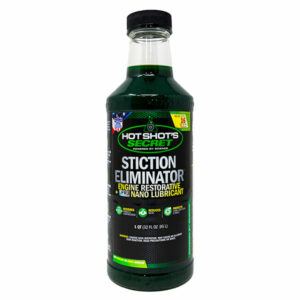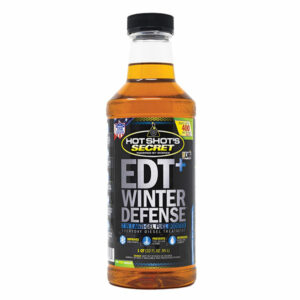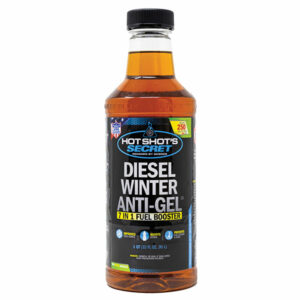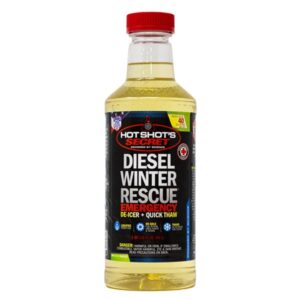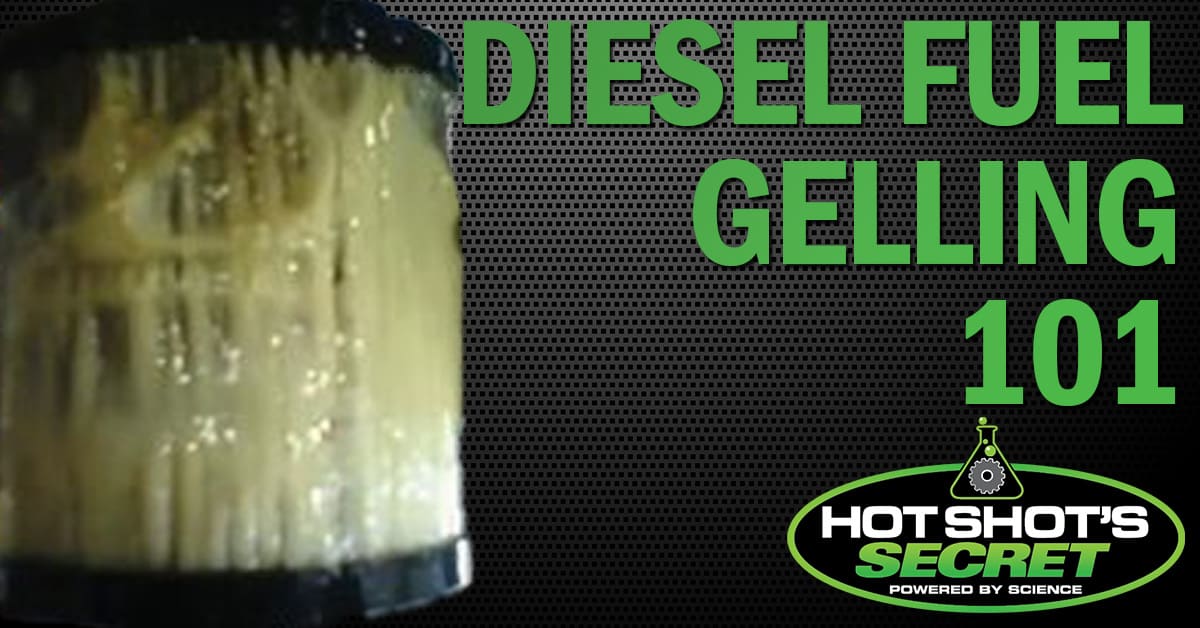
Let’s take a minute and get down to the basics of diesel fuel gelling. In this article, we’ll cover ways to prevent diesel fuel gelling and how to treat diesel fuel once gelling has already started.
Why Does Diesel Fuel Gel?
Gelling occurs in diesel fuel when the temperature of the fuel drops so low that wax naturally found in the fuel begins to crystallize. Gelling can occur as high as 20°F, depending on the source and quality of fuel. Gelled diesel fuel can stop you in your tracks before you even get the engine started by clogging fuel lines and the filter(s), causing havoc on your fuel system. You’ll know if you have a possible gelling issue when your diesel vehicle will not start or stops operating during cold temperatures. Diesel is comprised of straight and branched-chain hydrocarbons. These kinds of hydrocarbons, also called paraffin waxes, become solid around 17.5 °F for #2 Diesel. The amount of paraffin wax diesel contains depends on the kind of crude oil used to produce the diesel fuel and the process used to manufacture it. Also, biodiesel fuel which is required to be mixed with diesel fuel in many states also adds to gelling. Biodiesel gels at higher temperatures than conventional diesel.
How to Prevent Diesel Gelling
You can undo gelling, but it is best to prevent it from happening in the first place. One preventative method is to use a specially designed fuel additive such as Hot Shot’s Secret Diesel Winter Anti-Gel promoting coverage down to -40°F. Diesel Winter Anti-Gel contains a powerful cetane improver for quicker cold starts and a maximum boost in power and performance. A treatment of Diesel Winter Anti-Gel is recommended with every fill-up for best results. Diesel Winter Anti-Gel should be added to fuel before reaching the cloud point. The cloud point refers to the temperature at which wax in diesel forms a cloudy appearance. By adding Diesel Winter Anti-Gel at the pump, you get the advantage of warmer fuel from underground tanks, preventing fuel gelling in its tracks.
When added to diesel, Hot Shot’s Diesel Winter Anti-Gel has a pour point of -65° F, for outstanding cold weather protection. The pour point is the temperature at which the paraffin in the fuel has crystallized to the point where the fuel gels and becomes resistant to flow. You don’t have to take our word that Diesel Winter Anti-Gel works, check this video from Project Farm on YouTube. He compared many of the top brands of diesel fuel treatments and Hot Shot’s Diesel Winter Anti-Gel came out on top in testing.
What to Do If Fuel Has Already Gelled?
When you suspect you are a victim of gelled fuel, your best bet is to check the fuel tank and fuel filter(s). If gelling has occurred you will need to use an emergency additive such as Hot Shot’s Secret Diesel Winter Rescue.
Gelled Fuel in The Fuel Tank:
If the fuel is gelled in the tank, add the entire contents (32 ounces) of Diesel Winter Rescue to every 40 gallons of fuel in the tank(s). Remove the fuel filters and fill all fuel filters with a mixture of 50% Diesel Winter Rescue and 50% diesel fuel. Reinstall the fuel filters and then start your engine. Let your engine idle to warm up the fuel system and clear any remaining gelled masses.
Gelled Fuel in Fuel Lines or Fuel Filters:
If your fuel is liquid in the fuel tank(s) but your engine won’t start, remove the engine’s fuel filters and fill with the same 1:1 mixture of Diesel Winter Rescue and standard diesel fuel. Then, reinstall the fuel filters, start the engine, and let the engine until fully warm.
How Do Hot Shot’s Diesel Winter Products Work?
Hot Shot’s Diesel Winter Rescue is a diesel fuel de-icer additive and is a fully formulated emergency product that contains a military-grade de-icer with lubricity additive. It is formulated to re-liquefy gelled fuel and de-ices frozen fuel filters to restore the flow of diesel fuel to the engine allowing the vehicle to be fully operational again. Products such as Diesel Winter Rescue are a helpful option to carry in your vehicle during the winter months when gelling most commonly occurs.
The best defense against diesel gelling is prevention. By using an additive such as Hot Shot’s Secret Diesel Winter Anti-Gel with every fill-up during the cold-weather season, you can keep your vehicle moving down the road for temperatures down to -40°F. Diesel Winter Anti-Gel has the added benefits of increased cetane and lubricity for better performance. If gelling does occur, it’s best to use an emergency additive such as Hot Shot’s Secret Diesel Winter Rescue to re-liquefy gelled fuel, getting your diesel engine running again.

